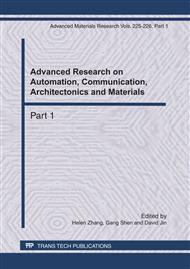p.890
p.895
p.903
p.907
p.911
p.917
p.921
p.925
p.929
Spurious Emission Interference to TD-SCDMA on POI
Abstract:
Coexistence of different wireless communiation system is a worldwide phenomenon at present. Thus how to mitigate the spurious emission interference has become an emergent point to improve the performance of communication. This paper analyzes the spurious emission interference in TD-SCDMA on POI. According to the theories of spurious emission interference and isolation, this paper constructs a platform to simulate such coexistence. Considering the characters of each system, the platform applies Monte-Carlo method to obtain desired parameters, including stray electrical level and MCL. These parameters are significant guide lines for equipments to mitigate interference.
Info:
Periodical:
Pages:
911-916
Citation:
Online since:
April 2011
Authors:
Price:
Сopyright:
© 2011 Trans Tech Publications Ltd. All Rights Reserved
Share:
Citation:


